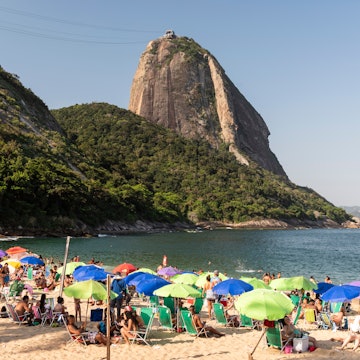

Check your entry requirements for Ecuador before you visit as they vary depending on citizenship © Laura BC / Getty Images
For most travelers, entering the vast diversity of Ecuador’s Cuatro Mundos ("Four Worlds": the Pacific Coast, Andes, Amazon and Galápagos) requires nothing more than arriving with your passport.
However, citizens of some countries will require a visa to enter Ecuador, and the process isn't always straightforward. And there's even the option for some travelers to stay a little longer and work in this beautiful country. Here's everything you need to know about the entry requirements for Ecuador.
Do I need a visa before visiting Ecuador?
Ecuador welcomes visitors from most countries for 90 days, issuing a T3 visa stamp on arrival. There is no visa requirement for most foreign visitors who carry passports with at least six months’ validity from their entry date.
With the exception of Venezuelans, South American nationals may enter Ecuador with a cédula (national ID card); a passport isn’t necessary.

Some travelers need to apply for a visa in advance
For citizens from around three dozen countries, mostly in Africa and Asia, visa requirements apply. Those countries currently include Afghanistan, Angola, Bangladesh, Cameroon, Cuba, Egypt, Eritrea, Ethiopia, Philippines, Gambia, Ghana, Guinea, Kenya, India, Iraq, Iran, Libya, Nigeria, Pakistan, Nepal, Democratic Republic of Congo, Democratic People's Republic of Korea, Senegal, Syria, Sri Lanka, Somalia, Venezuela, Vietnam, Yemen, Haiti, Republic of Congo, Mali, Ivory Coast and Myanmar.
Visitors from these nations must submit a visa application, a valid passport, at least one passport photo, an onward ticket and travel insurance. The application fee is US$50; once approved, the visa itself costs US$150. For current requirements, visa applicants should contact the Ecuadorian embassy in their home country.
Once in Ecuador, you can extend your stay for another 90 days (called a prórroga) online, or by visiting any immigration office in Ecuador. Locations include (but are not limited) to Quito, Guayaquil and Cuenca. If you plan to stay beyond the initial 90 days, start the extension process early to ensure you don’t inadvertently overstay your visa.
Be aware that popping over the border into another country and returning to Ecuador is not a viable extension option. Doing so does not automatically grant you another 90 days in Ecuador.
Vaccination requirements for Ecuador
There are no longer any COVID-19 vaccination requirements to enter Ecuador or the Galápagos Islands, but you will need to complete an online Health Declaration Form before checking into your flight.
For visitors planning on heading into the Ecuadorian Amazon, it’s highly recommended to get a yellow fever vaccination at least ten days before you arrive. The relevant provinces include Napo, Pastaza, Orellana, Sucumbíos, Zamora-Chinchipe, Morona-Santiago and parts of Esmeraldas.
Proof of yellow fever vaccination is mandatory for anyone arriving from regions where the disease is prevalent, such as Brazil, the Democratic Republic of Congo and Uganda. This also applies to Ecuadorian nationals.

Want to stay longer? Get a work visa for Ecuador
To work in Ecuador officially, you must have a work visa. Unless you’re self-employed, basing yourself in bigger cities like Quito or Guayaquil and teaching English is the most viable option for many. Ecuador has also established a reciprocal working holiday agreement with Australia – Aussie nationals aged 18 to 30 may work in Ecuador for up to 12 months. For the rest of the world, working holiday visas are not an option.
Depending on your skill set, several non-resident visas can be acquired in Ecuador. Along with the usual documentation such as passport and visa application, student visas require proof of admission or enrolment in an accredited Ecuadorian educational institution. Once approved, the visa costs around US$130. A work visa under the general categories of "professional, technical, technological or artisanal" activities (the 12-VI visa) also costs US$400 upon approval.
If you plan to stay beyond 90 days, come prepared with two extra passport photos, proof of full health insurance coverage for the duration of your stay (two years for approved work visas), a translated and certified criminal record from your home country, and any educational or professional certifications you may need for the application process.
Immigration policies are subject to change, so always contact the nearest Ecuadorian embassy or consulate in your home country if you have questions about current requirements. Details on the various types of work visas can be found at the Ministry of Foreign Affairs and Human Mobility (in Spanish only).
















